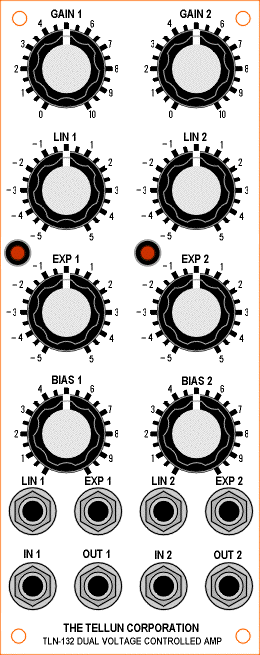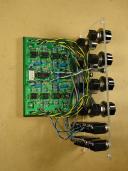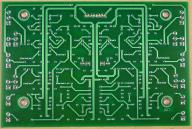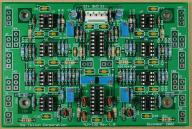
Back to Synth DIY Projects
Last updated: February 1, 2007
DescriptionThe TLN-132 is a two channel VCA based on a Solid State Micro Technology For Music SSM 2022 chip. Both channels are identical and feature: separate linear and exponential control voltage inputs with reversing attenuators, a gain control for adding a constant value to the linear control input, and a bias control for adding a constant value to the exponential control input. Both linear and exponential inputs can be used at the same time. DC coupling is used throughout for passing DC signals. One signal input and one signal output are provided.Total current draw for TLN-132 is 29 mA @+15V and 21 mA @-15V. |
||||||||||
AvailabilityThis module was sold out from the moment I got the prototype boards made. I only had a few SSM 2022 chips in my stock and was unable to obtain more of them. Consequently, there were very few PCBs made and they sold out almost immediately. I may get more boards made if I can find an affordable source of SSM 2022 chips. Drat. |
||||||||||
DownloadsThe User Guide does not contain detailed explanations on how to install parts or which kinds of solder to use. The intended audience is the experienced kit builder who is quite comfortable building a circuit from a description, a parts list, and a schematic. Calibration routines are included. View the TLN-132 User Guide rev 1.1 (pdf) Graze over the TLN-132 Schematics rev 1.0 (pdf) |
||||||||||
Pictures
|
||||||||||
Sound SamplesAlthough VCAs are extremely useful, they're not the most exciting module to demo. Rather like the viola and Rodney Dangerfield, they just don't get any respect. These demos feature the TLN-132 in some simple patches that were recorded without any added effects.
|




